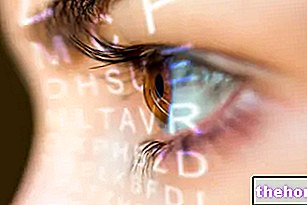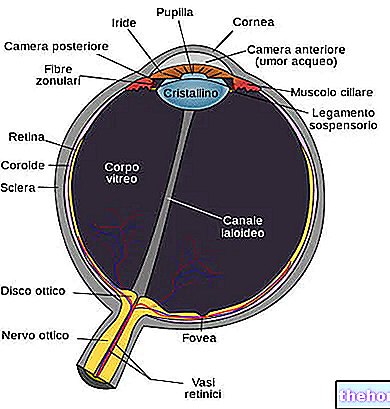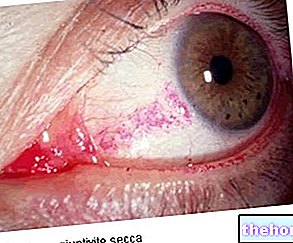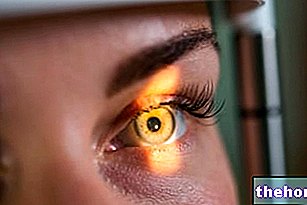Generality
Iridology, or iridodiagnosis, is a diagnostic technique of alternative medicine, which considers it possible to evaluate the state of health of an individual, through the observation of his irises.

Iridology bases its theories on the idea that the irises represent an anatomical mapping of the human body, which includes organs, joints, bone structures and glands.
No clinical and scientific studies have demonstrated the efficacy of iridology in the diagnostic field.
The main critics of iridology are doctors, who affirm that the iris of the human eye is a stable phenotypic feature over the course of life and independent of the affections affecting the various organs and other anatomical structures of the human body.
What is iridology?
Iridology, or iridodiagnosis, is a diagnostic practice of alternative medicine, based on the idea that it is possible to evaluate the state of health of a person, based on the characteristics of the iris, its anomalies and its changes.
Therefore, the promoters of iridology and its practitioners believe that, from the careful observation of the iris of an individual, it is possible to obtain information relating to the state of health of the latter.
Brief review of what the iris is
For readers who are not aware of it, the iris is the colored, ring-shaped area of the eye, at the center of which the pupil takes place.
The iris belongs to the so-called middle layer of the eye (or uvea), it contains blood vessels, pigmented cells and two layers of smooth muscle.
THE DETAILS OF THE THEORY
Iridologists - that is, the lovers of iridology - base their theories and affirmations on the idea that certain areas of the right and left iris correspond to specific organs, joints, bone structures and glands of the human body. In other words, according to the iridologists, the irises would be equivalent to topographic maps on which the map of the anatomical elements of the human body is reproduced in specific areas.
On the basis of these principles, for iridologists, the observation of the irises would represent a diagnostic tool, since, from an "anomaly or" irregularity of the right or left iris, it is possible to understand which organ or part of the body is suffering.
Iridologists are keen to clarify that their diagnostic method allows to:
- Identify the location of suffering, but not to understand precisely the type of disease present.
- To understand if, in the past, a certain part of the human body has suffered from some disorder (eg: bone fracture).
THE IRIS AS A MAP OF THE HUMAN BODY
The well-known iridologist named Bernard Jensen (1908-2001) mapped the irises - that is, to identify the areas on the irises corresponding to the various organs of the human body -.
During his iris mapping work, Jensen identified 166 areas (or zones), 80 on the right iris and 86 on the left iris.
In addition, he thought that, to simplify the consultation of the resulting maps, it was appropriate to divide the individual irises like the face of a clock.

View larger image
History
The idea that something can be said about the health of an individual from the observation of the eyes is a very ancient theme, which has aroused considerable interest.
The first explicit description of the diagnostic power of the "observation of the iris" is found in a text published in 1665 and entitled Chiromatica Medica. The author of Chiromatica Medica it seems to be a certain Philippus Meyeus, also known as Philip Meyen von Coburg.
For iridologists, the fathers of iridology are two: a Hungarian named Ignaz von Peczely and a Swede named Nils Liljequist, both of whom lived in the nineteenth century.
Von Peczely and Liljequist published several writings, in which they claimed to have noticed changes in the irises of people and animals who, in the past, had suffered from some ailment or health problem (eg, a broken leg).
Another iridologist from the past, who deserves a special mention, is the German Pastor Emanuel Felke. Felke's contribution to iridology dates back to the early 1900s.
The diffusion and notoriety of modern iridology in the world is due to the aforementioned Bernard Jensen and his collaborators P. Johannes Thiel, Eduard Lahn and J. Haskell Kritzer.
Reliability and criticism
Iridology is a practice devoid of any scientific foundation.
In fact, no study conducted so far has proven the effective diagnostic efficacy of iridology. In other words, there is no evidence to support the fact that looking at the iris of a person allows to diagnose the possible presence of a suffering organ.
SCIENTIFIC RESEARCH AND IRIDOLOGY: THE EVIDENCE AGAINST
- One of the first studies that demonstrated the ineffectiveness of the observation of the iris, as a diagnostic tool, dates back to 1957. This research took place in Germany and who carried it out analyzed the iris of more than 1,000 people.
- In 1979, the well-known iridologist Bernard Jensen and two of his colleagues were put to the test in an interesting experiment, after which iridology proved ineffective.
The experiment in question consisted of having Jensen and colleagues observe the irises of 143 potential kidney patients and ask them to identify the sick people.
Of the 143 individuals selected for iris observation, there were only 48 kidney patients, but this information was clearly unknown to iridologists.
At the end of their observations, the 3 iridologists were unable to correctly identify the patients and the number of patients. For example, one of the three iridologists stated that 88% of the individuals in the healthy group had kidney disease and that 74% of the individuals in the kidney group were healthy. - In a study similar to the previous one, a team of researchers selected 39 individuals who, due to the presence of gallstones, would have to undergo surgical removal of the gallbladder the following day. Then, the same team also selected a group of healthy people.
At this point, the researchers put the two groups together and approached 5 iridologists asking them to observe the irises of all the selected individuals and indicate which of the latter had some gallbladder problem.
The result was that the 5 iridologists were unable to correctly identify the sick people, confirming all the doubts regarding the real diagnostic power of iridology. - In 2005, a group of researchers tested whether iridology could be a valuable tool for diagnosing cancer.
For this test, the researchers selected 110 subjects, including 68 with cancer and 42 without any cancer.
Then, they consulted a professional iridologist, who knew nothing of the clinical history of the 110 selected individuals, and asked him to make a diagnosis based on the observation of the iris. To be precise, they invited him to indicate who was sick and who was not and what type of tumor the patients had.
At the end of his evaluations, the iridologist drew up a list of sick people and diseases, which did not coincide at all with the real situation.
In light of this, the researchers concluded that iridology is not a valid practice for the diagnosis of cancer.
CRITICISM
The medical-scientific community criticizes iridology, calling it a pseudoscience.
Most of the complaints against him are based on the fact that the iris is a stable phenotypic feature over the course of life, so it does not change in relation to an illness in an organ or to a particular state of ill health.
WHY IS IT NOT RECOMMENDED?
Critics of iridology - doctors in the first place - advise against iridology by stating that:
- It lacks any diagnostic power;
- It unnecessarily steals time from those who undergo it. The sessions at an iridologist can also be very long, as well as the waiting times for an appointment;
- It represents a considerable expense. Those who practice iridology have rates that are not affordable for everyone.




























